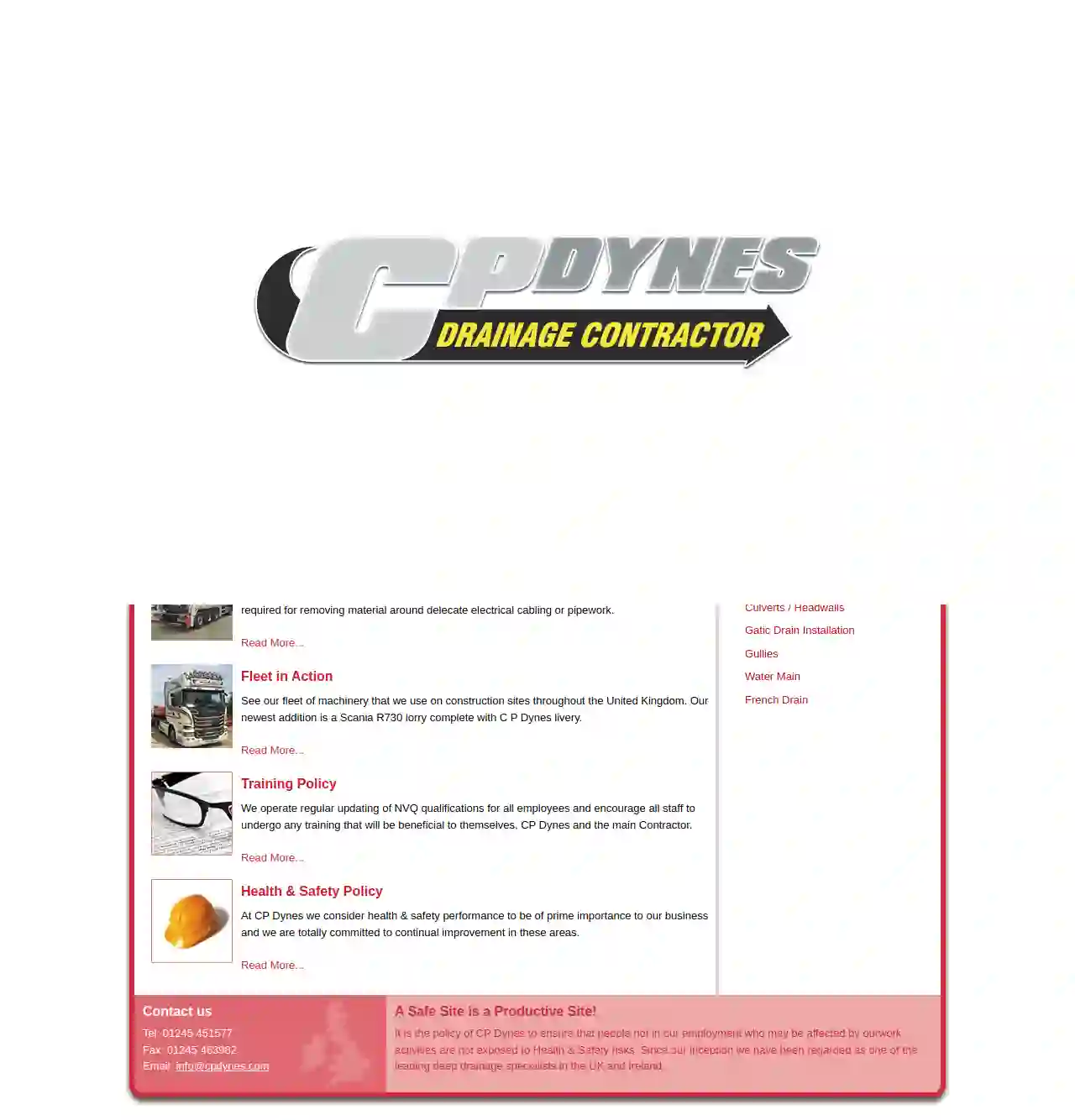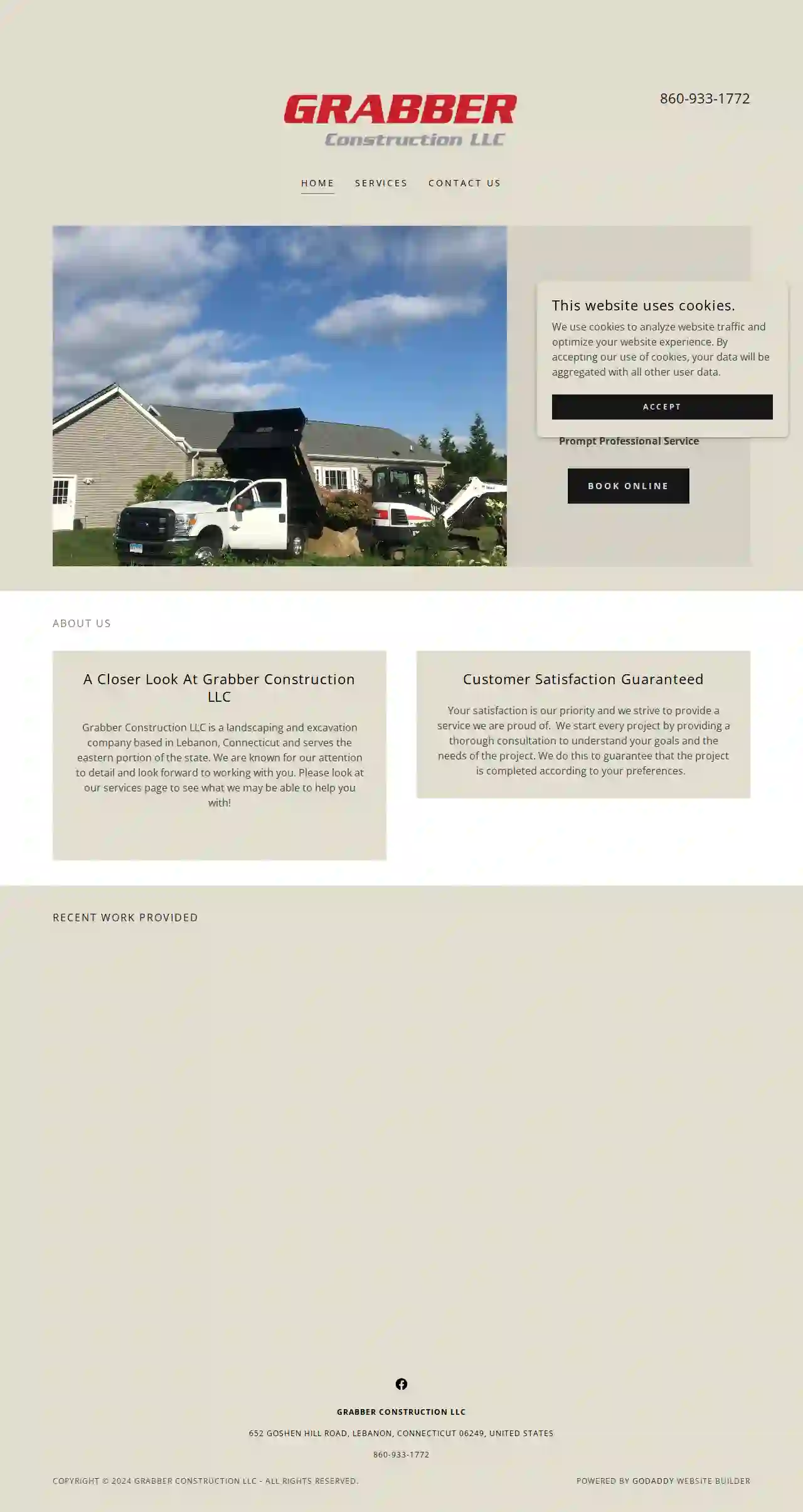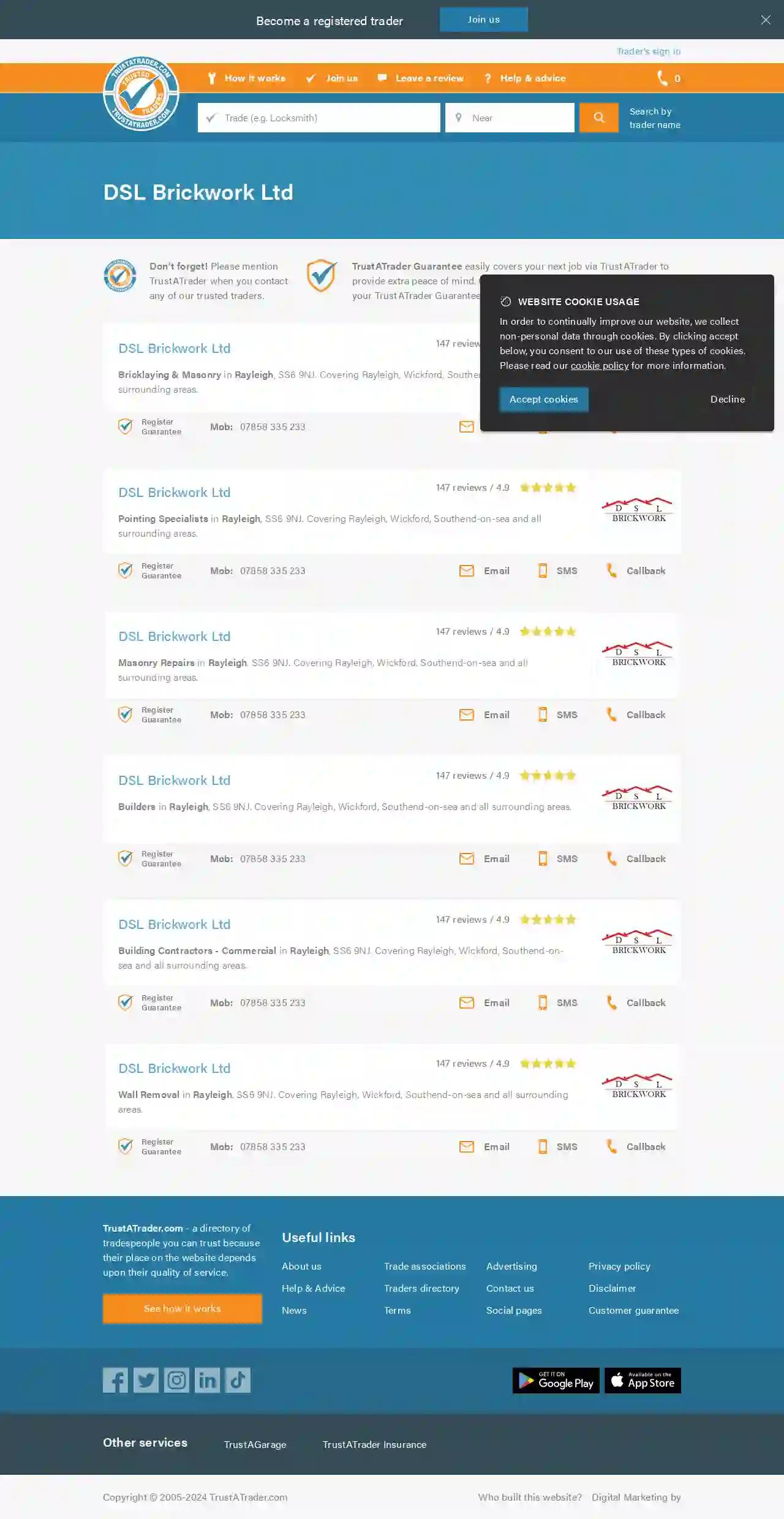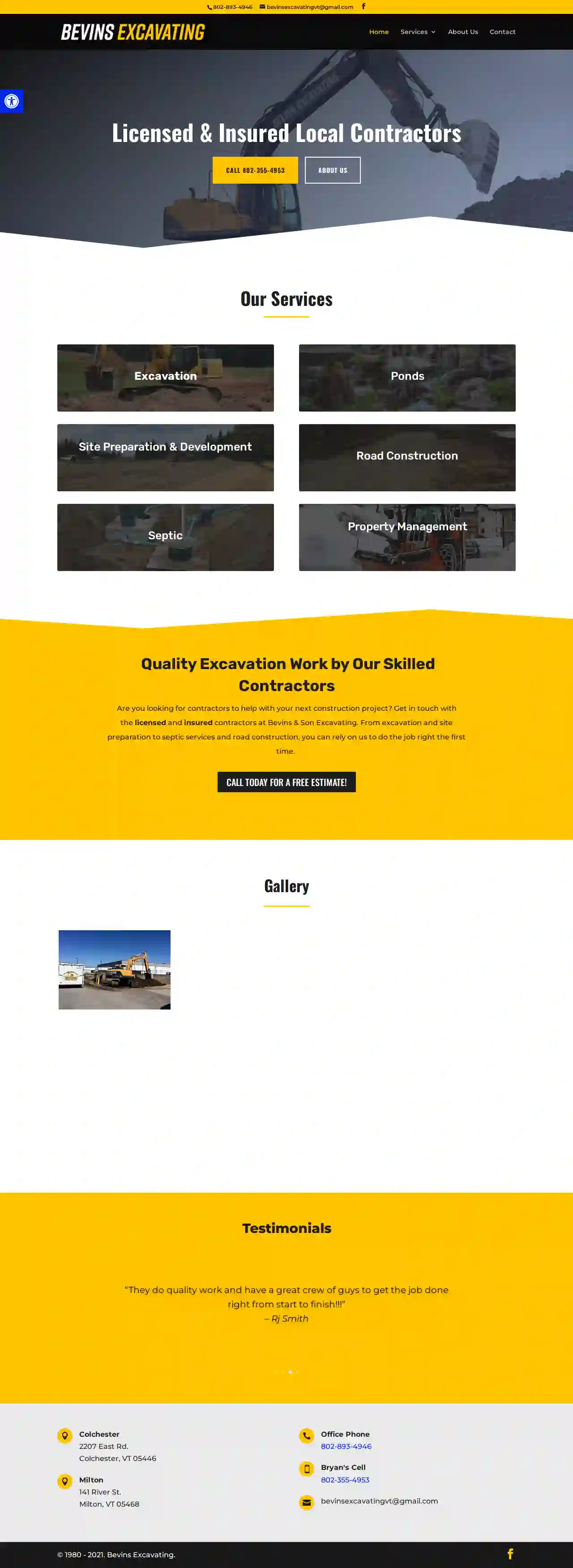Excavation Contractors Galleywood
Find the best Excavation Contractors in Galleywood
Get 3 FREE Land Excavation quotes for your project today! Compare profiles, reviews, accreditations, portfolio, etc... and choose the best service.

Brentwood C Excavation
527 reviews56 54th Street South, Wasaga Beach, L9Z 1W9, GBAbout Brentwood C Excavation For over 25 years, Brentwood C Excavation has been the trusted excavation contractor for Wasaga Beach and surrounding areas. We take pride in delivering exceptional service and achieving the best possible results for our clients. Our commitment goes beyond just completing a job; we strive to make the entire project experience problem-free, from initial consultation to final completion. We are a word-of-mouth business, built on a foundation of satisfied customers and strong relationships. Our team brings a wealth of experience and expertise to every project, ensuring meticulous attention to detail and clear communication throughout the process. We specialize in a variety of excavation projects, including foundations, drainage systems, pool installations, and large tree removals. Our team is equipped with the knowledge and skills necessary to safely and efficiently remove even the most challenging trees, minimizing disruption to your property. We encourage you to ask for our references – we’re confident they’ll speak to the quality of our work and commitment to your satisfaction.
- Services
- Why Us?
- Testimonials
- Gallery
Get Quote
CP Dynes
4.510 reviewsChelmsford, GBCompany History CP Dynes is a leading deep drainage and large bore specialist in the UK and Ireland. We have a reputation for delivering high-quality work and exceptional service on a wide range of projects, all while prioritizing safety. Our comprehensive fleet and equipment is self-owned and updated every 3 years. All our operatives are CSCS and Health and Safety trained and undergo regular testing in all relevant work practices. Our proprietor and supervisors are always present on site, personally directing and overseeing all activities. Our Commitment We are committed to understanding and meeting the needs and expectations of our clients, building strong and lasting relationships. Our ethos is to provide the highest standard of work while keeping costs to a minimum. Safety First At CP Dynes, we believe a safe site is a productive site. We are committed to ensuring that everyone on our sites, including those not in our direct employment, is safe and protected from health and safety risks.
- Services
- Why Us?
- Gallery
Get Quote
DJB Build
510 reviews123 Main Street, Birmingham, B12 9AB, GBAbout DJB Build DJB Build is a family-run building company based in the heart of the UK. We have over 20 years of experience in the construction industry, providing a wide range of building services to both domestic and commercial clients. Our team of skilled and experienced builders are dedicated to delivering high-quality workmanship and exceptional customer service. We pride ourselves on our attention to detail, commitment to deadlines, and competitive pricing. Whether you're looking for a small renovation or a large-scale construction project, DJB Build is the company you can trust to get the job done right. We are committed to providing our clients with a stress-free and enjoyable building experience. We work closely with our clients throughout the entire project, ensuring that their needs and expectations are met. We are also fully insured and accredited, giving you peace of mind that your project is in safe hands.
- Services
- Why Us?
- Accreditations
- Our Team
- Testimonials
- Gallery
Get Quote
Grabber Construction LLC
4.924 reviews652 Goshen Hill Road, Lebanon, 06249, GBAbout Us Grabber Construction LLC is a landscaping and excavation company based in Lebanon, Connecticut and serves the eastern portion of the state. We are known for our attention to detail and look forward to working with you. Please look at our services page to see what we may be able to help you with! Customer Satisfaction Guaranteed Your satisfaction is our priority and we strive to provide a service we are proud of. We start every project by providing a thorough consultation to understand your goals and the needs of the project. We do this to guarantee that the project is completed according to your preferences.
- Services
- Why Us?
- Gallery
Get Quote
TLC Building Services
12 reviewsSuite 28 Colchester Business centre, Colchester, Essex, CO1 2JS, GBTLC Home Group is a family-run business with extensive experience in delivering high-quality Renewables and construction projects, from single new build homes and extensions to multi-million pound conversions of commercial buildings. We are committed to harnessing the power of renewable energy to create a greener, more sustainable future. Our business started up in Colchester and has expanded to serve areas across Essex, Suffolk and London. Explore our diverse portfolio and services that makes our trusted family-run business proud to say we're large enough to trust, but small enough to care. We are committed to providing the highest standard at affordable prices. We love sharing ideas at TLC Home Group and are keen to hear your vision for your property. Get in touch by filling out the form, contacting the details on this page or making an appointment to see us in our Ipswich offices. TLC is also able to arrange a viewing of one of our many ongoing projects. Please get in touch with your details and we will find what build best addresses your situation.
- Services
- Why Us?
- Gallery
Get Quote
DSL Brickwork
1.56 reviewsRayleigh, SS6 9NJ, GBDSL Brickwork Ltd DSL Brickwork Ltd is a trusted and reliable bricklaying and masonry company based in Rayleigh, Essex. They offer a wide range of services, including bricklaying, pointing, masonry repairs, building, and building contracting. They are known for their high-quality workmanship and commitment to customer satisfaction. DSL Brickwork Ltd has been serving the Rayleigh area for many years and has built a strong reputation for their professionalism and expertise. They are fully insured and accredited, giving you peace of mind that your project is in safe hands. Services Offered Bricklaying & Masonry Pointing Specialists Masonry Repairs Builders Building Contractors - Commercial Wall Removal Areas Covered DSL Brickwork Ltd covers Rayleigh, Wickford, Southend-on-sea and all surrounding areas. Contact Information Mob: 07858 335 233
- Services
- Why Us?
- Gallery
Get Quote
Bevins & Son Excavating
2207 East Rd., Colchester, 05446, GBQuality Excavation Work by Our Skilled Contractors Are you looking for contractors to help with your next construction project? Get in touch with the licensed and insured contractors at Bevins & Son Excavating. From excavation and site preparation to septic services and road construction, you can rely on us to do the job right the first time. CALL TODAY FOR A FREE ESTIMATE!
- Services
- Why Us?
- Testimonials
- Gallery
Get Quote
Elson group construction
51 reviews75 Springfield Road, Chelmsford, CM2 6JG, GBAbout Us As a team, we have a wealth of knowledge and experience in the construction industry as a leading Groundworks and Civil Engineering contractor based in Essex with our projects ranging in value up to £4million. What We Do Services we offer - Full Groundwork And Civil Engineering Contracts / Projects, Bulk Earth Works, Enabling Works, Foundations, All Aspects of Drainage, Reinforcement, Concrete and Shutting, Tarmac Works, External Works, Operated Plant Hire and Labour, Demolition, Aggregate supplies and Muck away services. With our knowledge and experience in the groundwork and civil engineering sector we can offer design and structural services to assist where possible value engineering options to ensure projects meet the required budgets. We can efficiently support any project from start to finish with our own fleet of plant and vehicles. We thrive to ensure each and every aspect and communication with us as a business is a positive one, as customer satisfaction and relationships are the key to our success. Working Together As part of our service, we focus on creating a partnership that makes a working relationship the key to completing every project on time and to your budget. Why Choose Us? When choosing a Groundwork Contractor the key elements are trust along with our open honest approach. "Trust is what we can assure we offer and our reputation proves this."
- Services
- Why Us?
- Gallery
Get Quote
Magnar Group
Warden House, 37 Manor Road, Colchester, CO3 3LX, GBMagnar Group: Your Trusted Construction Partner in Essex Magnar Group is a leading construction company in Essex, UK, with over 20 years of experience delivering high-quality spaces for a diverse range of clients. We've built a reputation for versatility, handling projects of all sizes and complexities. Our commitment to client satisfaction is evident in our meticulous approach, where we prioritize understanding your vision and needs, seamlessly integrating design and construction to create exceptional environments that exceed expectations. We specialize in a comprehensive suite of services, including Strip Out, Site Clearance, Demolition, Fit Out, Construction, and Engineering. By offering all the services you need under one roof, we eliminate the stress and cost associated with managing multiple contractors. At Magnar Group, we're dedicated to continuous improvement. We invest in our people, technology, and practices to ensure we consistently deliver the ultimate solution for every project. Our team of highly skilled site contractors possesses the experience and expertise to handle any job, from residential to commercial projects. Our commitment to quality, sustainability, and health & safety is unwavering. We believe in building lasting relationships with our clients, and our Contract Managers are always available to address any concerns and ensure a smooth project execution.
- Services
- Why Us?
- Gallery
Get Quote
Insignia Building Services
Sterling House, Suite 213, East Wing, Langston Road, Loughton, Essex, IG10 3TS, GBINTRODUCTION For over thirty years, we have gained success from building a solid reputation for quality projects, long-standing client relationships and stability.
- Services
- Why Us?
- Gallery
Get Quote
Over 13,059+ Excavation Contractors registered
Our excavation pros operate in Galleywood and beyond!
ExcavationHQ has curated and vetted the Best Excavation Contractors in and around Galleywood. Find a top & reliable business today.
Frequently Asked Questions About Excavation Contractors
- Basement Size: The larger the basement, the more excavation is required, increasing the cost.
- Soil Type: Excavating rocky or dense clay soil is generally more expensive than loose soil.
- Accessibility: Difficult-to-access sites might require specialized equipment or more labor, driving up costs.
- Foundation Type: The chosen foundation type (full basement, crawl space, slab) affects excavation needs.
- Underpinning: If underpinning (strengthening existing foundations) is necessary, it significantly increases costs.
- Disposal Fees: Hauling excavated soil to disposal sites adds to the overall expense.
- Topsoil Removal: Stripping the fertile topsoil layer from a site, often preserving it for landscaping.
- Trench Excavation: Digging long, narrow trenches for utilities (pipes, cables) or foundations.
- Basement Excavation: Removing earth to create a space for a basement beneath a structure.
- Pool Excavation: Digging a precise hole for installing a swimming pool.
- Roadway Excavation: Removing earth and preparing the ground for road construction.
- Demolition Excavation: Clearing debris and preparing the site after demolition.
- Channel Excavation: Creating channels for drainage or irrigation.
- Clearly Define the Scope: Outline the project's goals, including the excavation area, depth, grade, and intended use.
- Obtain Necessary Permits: Research and acquire any required permits from your local authorities.
- Mark Utility Lines: Contact your utility companies to locate and mark underground utilities to prevent damage.
- Communicate with Neighbors: Inform your neighbors about the project's timeline and potential noise or disruptions.
- Prepare the Site: Clear any obstacles, such as vegetation, furniture, or structures, from the excavation area.
- Discuss Safety Protocols: Review safety procedures with the contractor to ensure a safe work environment.
- Excavations Deeper Than a Certain Depth: This varies by jurisdiction, usually around 5 feet.
- Excavations Near Utilities: Digging near buried utilities (gas, water, electric) often requires permits and utility locates to prevent damage.
- Excavations Affecting Public Property: Projects impacting sidewalks, roads, or other public areas typically require permits.
- Excavations in Environmentally Sensitive Areas: Projects in wetlands, floodplains, or other sensitive areas might need special permits.
How much does it cost to excavate a basement?
What are the different types of excavation?
What should I do before excavation starts?
Do I need a permit for excavation?
How much does it cost to excavate a basement?
- Basement Size: The larger the basement, the more excavation is required, increasing the cost.
- Soil Type: Excavating rocky or dense clay soil is generally more expensive than loose soil.
- Accessibility: Difficult-to-access sites might require specialized equipment or more labor, driving up costs.
- Foundation Type: The chosen foundation type (full basement, crawl space, slab) affects excavation needs.
- Underpinning: If underpinning (strengthening existing foundations) is necessary, it significantly increases costs.
- Disposal Fees: Hauling excavated soil to disposal sites adds to the overall expense.
What are the different types of excavation?
- Topsoil Removal: Stripping the fertile topsoil layer from a site, often preserving it for landscaping.
- Trench Excavation: Digging long, narrow trenches for utilities (pipes, cables) or foundations.
- Basement Excavation: Removing earth to create a space for a basement beneath a structure.
- Pool Excavation: Digging a precise hole for installing a swimming pool.
- Roadway Excavation: Removing earth and preparing the ground for road construction.
- Demolition Excavation: Clearing debris and preparing the site after demolition.
- Channel Excavation: Creating channels for drainage or irrigation.
What should I do before excavation starts?
- Clearly Define the Scope: Outline the project's goals, including the excavation area, depth, grade, and intended use.
- Obtain Necessary Permits: Research and acquire any required permits from your local authorities.
- Mark Utility Lines: Contact your utility companies to locate and mark underground utilities to prevent damage.
- Communicate with Neighbors: Inform your neighbors about the project's timeline and potential noise or disruptions.
- Prepare the Site: Clear any obstacles, such as vegetation, furniture, or structures, from the excavation area.
- Discuss Safety Protocols: Review safety procedures with the contractor to ensure a safe work environment.
Do I need a permit for excavation?
- Excavations Deeper Than a Certain Depth: This varies by jurisdiction, usually around 5 feet.
- Excavations Near Utilities: Digging near buried utilities (gas, water, electric) often requires permits and utility locates to prevent damage.
- Excavations Affecting Public Property: Projects impacting sidewalks, roads, or other public areas typically require permits.
- Excavations in Environmentally Sensitive Areas: Projects in wetlands, floodplains, or other sensitive areas might need special permits.